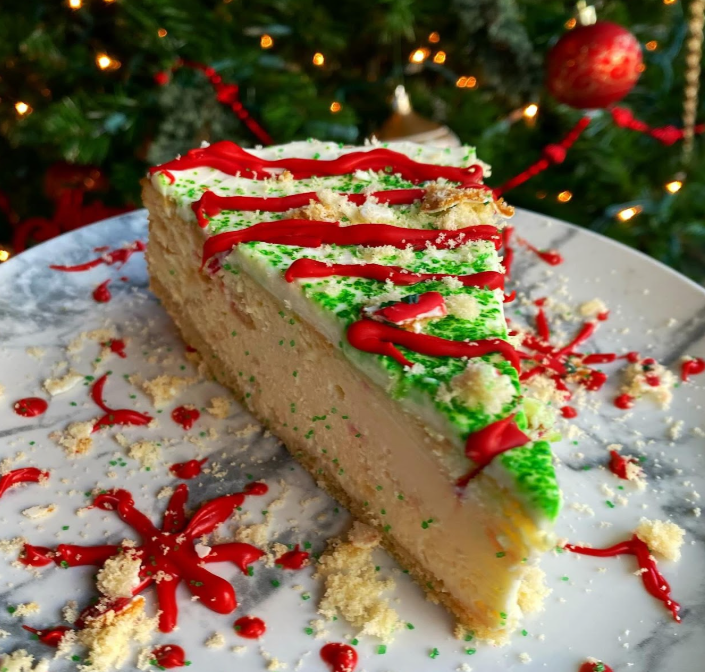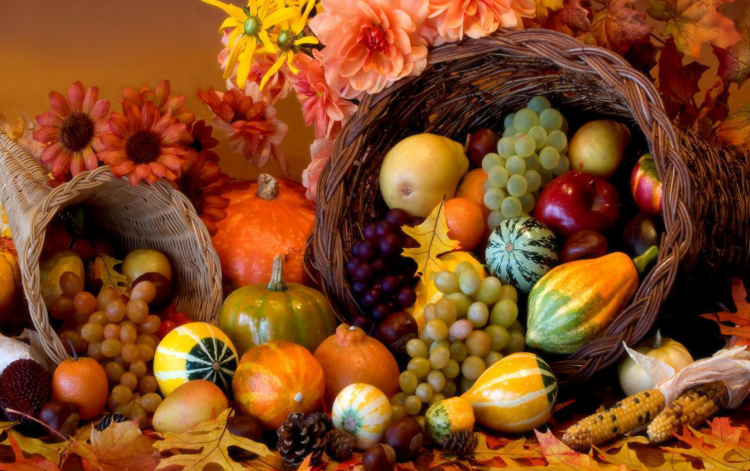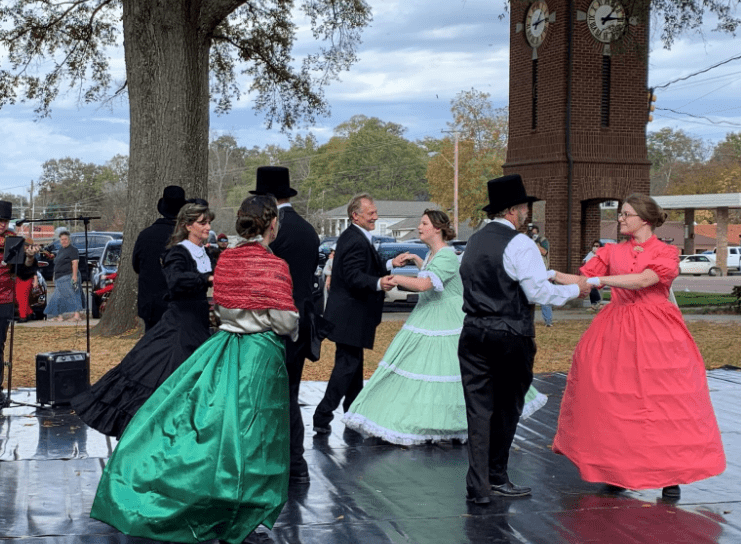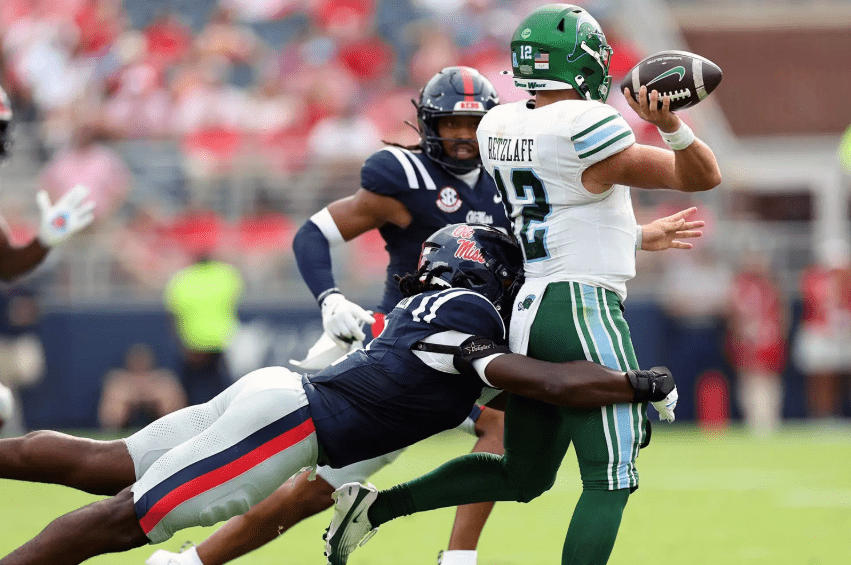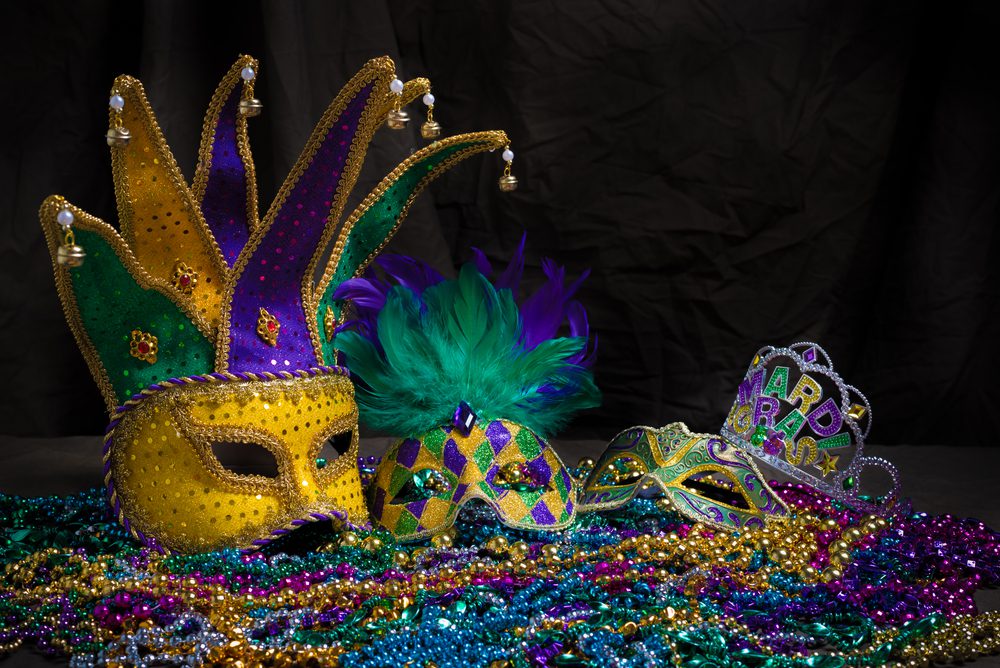
- Laissez le bon temps rouler across the Magnolia State on this Fat Tuesday.
‘Tis the season for Mardi Gras revelry. I recently discovered that many cities above the Mason-Dixon Line brag about their Mardi Gras celebrations online, but let’s face it, nobody does Mardi Gras quite like the folks who inhabit the sliver of land from Mobile, Alabama, to New Orleans, Louisiana.
Sandwiched between the two cities is the Mississippi Gulf Coast, 80 miles dotted with towns of varying sizes. Our coast brethren can throw a Mardi Gras soiree with the best of them. Travel just a little up the mighty Mississippi River, and you will find that Natchez and Vicksburg party big as well.
Today’s carnival season is filled with balls, parades, trinkets, king cakes, feathers, doubloons, beads of purple, green, and gold, and mysterious masks, all in a spirit of fun.
Believe it or not, Mardi Gras did not begin on Bourbon Street in New Orleans because college kids needed a break between Christmas and Easter.
Here are a few fun facts and a glossary in case you, as I, need more fluency in French and Mardi Gras lingo.
1. Mardi Gras’s origins can be traced to ancient festivals of the Romans.
When Christianity swept across the continent, many elements of Christian doctrine infiltrated the previous traditions. Sounds like a bit of “blended religion” to me. I know it is murky.
2. January 6, the first day of Epiphany, marks the beginning of Mardi Gras.
It immediately follows “the twelfth day of Christmas” and represents the visit of the three wise men to the baby Jesus.
3. The last day of Mardi Gras, Fat Tuesday, is always the day before Ash Wednesday, the first day of Lent.
Ash Wednesday is always 47 days before Easter. Thus, the length of the Mardi Gras celebrations varies yearly.
4. Mardi means Tuesday. Gras means fat, and “fat” does not refer to obesity in America but to the permission to consume foods forbidden during Lent.
Hence, the meaning behind “Fat Tuesday.” It is that one last raucous blow-out before the brethren come to their senses, repent, and give up their vices temporarily. Homemakers cleaned their pantry, although not before days of binging on every soon-to-be forbidden delicacy.
5. Carnival means “to remove meat.”
I, too, need help connecting the dots here. Carnival is a time when debauchery and partying is encouraged. Removing meat from one’s diet is part of the penance of Lent. Fish is fine, but meat is not.
6. King cakes are essential!
Bakeries across the South sell out of their King Cakes daily.
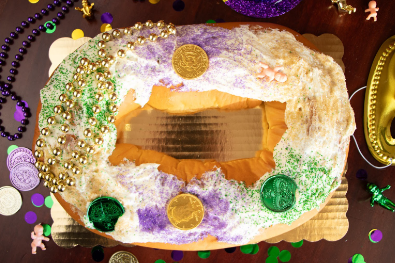
Did you know the braided dough represents the crown of thorns Jesus wore at his crucifixion? A cross between a classic coffee cake and a cinnamon roll is iced in yellow, green, and purple. Those Mardi Gras colors symbolize power, faith, and justice.
The plastic baby in the cake represents Jesus, reminding us of the wise men’s discovery. The modern tradition is that if you bite into that particular piece, you must host the next Mardi Gras soiree and provide a delicate king cake. (Pictured is a king cake from Loblolly Bakery in Hattiesburg.)
7. Krewes are social organizations that host balls and stage parade floats.
They are like fraternities for grownups, and they are secretive and very exclusive. They usually choose a royalty court, including a king and queen, who are revealed at a local Mardi Gras ball.
8. Throwing trinkets from the floats to the parade goers began in the 1920s.
The New Orleans King of Rex Krewe threw the first beads, which were made of glass. There was an uproar about the dangers and the mess left on the streets from broken beads. Eventually, plastic saved the day.
9. The first American Mardi Gras occurred in Mobile, Alabama.
In 1703, settlers from France held a Mardi Gras celebration that honored the cultural traditions of their homeland.
10. Fat Tuesday is sometimes called Mardi Gras Day in the present.
It is the last day of the Carnival Season. This year, Fat Tuesday falls on Tuesday, February 13.
Some of the Celebrations around Mississippi
Celebrations began in January, and we are approaching the end. Throughout this Mardi Gras season, parades and other events have taken place around the state, providing the opportunity for people to dress in Mardi Gras attire, grab some beads, eat a little king cake, listen to music and forget their troubles. Folks arrive early for the parades with a lawn chair and prepare to be entertained. And by all means, laissez le bon temps rouler – let the good times roll!
Vicksburg
The family-friendly parade rolled down Washington Street at 4:00 on Saturday, February 10, followed by the Carnaval de Mardi Gras at the Southern Cultural Heritage Center afterward. Bands, drill teams, churches, businessmen, and women maned the floats and threw thousands of beads. Of course, there was live music, food, and costumes.
After the parade, folks filled their bellies at The Carnaval de Mardi Gras Gumbo Cook-off at the Southern Cultural Heritage Center Auditorium. What is better than an evening of delectable gumbo and live music?
Natchez
The Krewe of Phoenix held its annual big parade on February 9. The fun began at 6:30 pm against the backdrop of historic Natchez for the parade known for its lit-up floats and live bands.
Ocean Springs
The Ocean Springs Night Parade is touted as a “spectacular celebration of colors and culture.” It is one of the Gulf Coast’s most anticipated Mardi Gras parades. Themed floats, marching bands, mystical creatures, and extravagant displays of color make this one of the coast’s most popular events. The parade rolled from the Ocean Springs Yacht Club at 7:00 pm and zig-zagged along a scenic route to Government Street.
Diamondhead
The Krewe of Diamondhead Circle parade rolled at 12:00 noon on February 10. Excited kids caught many beads, stuffed animals, and other throws during one of the most popular parades of the season that ends at the Diamondhead Country Club.
Pascagoula
The Jackson County Carnival Association held its annual parade on February 10 at 1:00pm. The event was one of the biggest in the history of the parade that winds up Market Street, across Jackson Avenue and back down Pascagoula Street as paradegoers line the streets dancing and even grilling along the route.
Gulfport
The Krewe of Gemini brought its annual parade to downtown Gulfport on January 10 at 2:00 pm. A 55-year tradition on the Gulf Coast, it is described by fans as “unforgettable.” This year’s theme was “Gemini Goes Wild!”
Bay St. Louis
The Mystic Krewe of the Seahorse held the renowned golf-cart parade, Lundi Gras, at 5:30 on February 12, originating at the train depot in Old Town. Translated “Shrove Monday,” Lundi Gras was originally a day of rest between Sunday and the intense partying of “Fat Tuesday!” Walkers are always welcomed to join in, and prizes are awarded in a long list of creative categories. This year, there was a bit of celebrity as Chapel Hart of “America’s Got Talent” fame served as the Grand Marshals. With a bit of gospel and a lot of country, their Mardi Gras performance sizzled.
The Krewe of Real People rolls today at 1:00 pm with floats, cars, trucks, marching bands, dance groups, bike clubs, horses, and walking groups. Literally, something for everyone!
Pass Christian
The St. Paul’s Carnival Association claims the largest parade on the Gulf Coast and has been producing it since 1930. Folks had to arrive early to a good perch at the February 11 parade. Tens of thousands lined the parade route along Scenic Drive and the prettiest parts of the historic city.
Biloxi
What would Mardi Gras be without a mention of Biloxi’s interpretation?
On February 10 at 5:30pm, the Krewe of Neptune hosted their parade through downtown Biloxi. Claiming to be the largest krewe along the Mississippi Coast, their parade is a popular one with towering floats and extravagant costumes. From the bay to Scenic Drive along the beach, it is a big one.
Since 1908, the Gulf Coast Carnival Association has held its prestigious procession through downtown Biloxi. At 1:00 pm on Fat Tuesday, the 2024 parade will roll through Biloxi with 450 sponsors celebrating 116 years of what they tout as “the greatest free show on the coast!”
